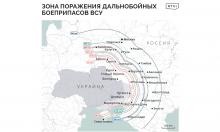Second wave of banking crisis inevitable in Russia
A number of economists are seriously concerned with the second wave of the bank crisis. According to the forecast from ACB’s head, the share of overdues in credit organizations will soar up to 20 percent by the year end. However, today’s banking statistics proves the opposite: the level of overdue indebtedness is declining and the level of deposits influx is rising day by day. Where will that second wave come from?

Positive statistics in the Russian banking sector issued today discords with grim forecast about the second wave of the banking crisis. General Director of the Deposit Insurance Agency (ACB) Alexander Turbanov, stated last Friday that the overdue indebtedness of Russian banks may grow up to 20 percent by the end of the year.
It is not for the first time that the ACB head is scaring us with the growth of the “bad assets”. Earlier he noted that the critical level of banking indebtedness growth was evaluated on the level of 10-15 percent. His expectations look truthful but he current statistics proves different.
Alexei Simanovski, a senior spokesman for Russia ’s Central Bank, said that the level of overdue indebtedness in the Russian banking system together with Sberbank made up 3.77 percent as of May 1. In his words, the overdue credit gained 12 percent within one month. “Dynamics is no worse than the average for previous months though the growth rates are high”, he says.
A report from Russia’s Central Bank over three months said that overdue credits increased by 52.3 percent in 2009.
Earlier Simanovski informed that the overdue on the corporate and retail credits of Russian banks (without Sberbank) totaled four percent as of May 1. The share of the overdue indebtedness is smaller taking Sberbank into consideration.
In accordance with the data from Russia ’s Central Bank as of April 1, the overdue indebtedness in the joint credit portfolio for all Russian banks was 3.1 percent retail credits – 4.7 percent.
The amount of household deposits during four months of 2009 increased by 6.6 percent in nominal terms, Central Bank’s Gennady Melikjan said at a news conference. He added that the April growth was 1.6 percent.
Melikjan reminded that four months of the previous year saw a 6.2-peercent increase in household deposits by 6,2% in nominal terms. “This is the only index showing an increase”, he said.
The share of foreign currency deposits in the overall amount of household deposits was 31.5 percent (as of May1) and after one month it dwindled – the index was 32,9% as of April 1.
The first quarter showed an increase of ruble and foreign currency private deposits - by 4.9 percent and made up (as of April1) 6 trillion 197.3 billion rubles. At the same time the cash outflow in March made up 0.3 percent. In April, ruble deposits were twice as large as those made in foreign currency.
Oksana Sergienko, Deputy Finance Minister said that it would be possible to escape the second wave of the banking crisis due to debt restructuring. “The problem of “bad debts” might look less acute than it was assumed earlier”, she added.
Nevertheless, experts fail to believe in the bright future. Analysts from Kalita-Finance are certain that present improvements are short-lived and mostly local. “We should understand that the amount of problematic loans continues to grow though not so fast as in the beginning of the year,” an expert said.
In addition, many specialists draw attention to the fact that banks may often underestimate the real amount of overdue indebtedness.
Subscribe to Pravda.Ru Telegram channel, Facebook, RSS!




